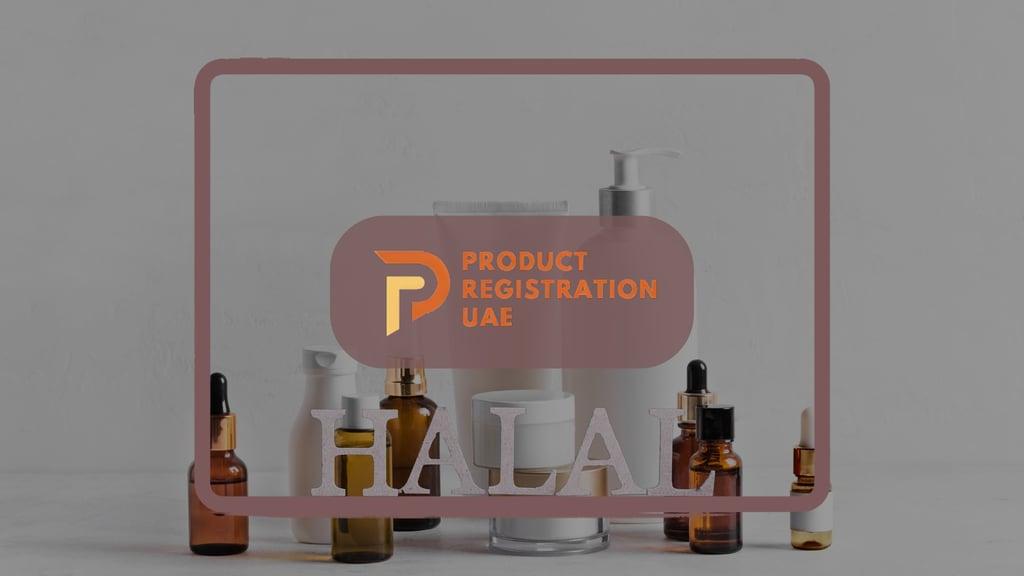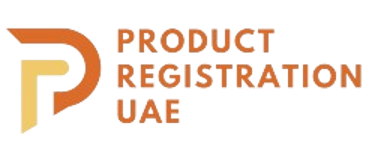Halal Certification for Cosmetics
Halal certification for cosmetics in the UAE made simple. See documents, ingredient rules, labeling, timelines, and how to avoid delays with expert guidance.
8/11/20254 min read


Halal Certification for Cosmetics in the UAE:
Process, Ingredients, and Approval Tips
Winning trust in the UAE beauty market means more than clean formulas and pretty packaging.
Consumers and retailers increasingly expect halal-certified cosmetics—products that are free from prohibited ingredients and manufactured under controlled, traceable conditions.
This guide explains what halal certification for cosmetics really involves in the UAE, who needs it, how to prepare a compliant dossier, and the pitfalls that slow approvals.
What Does “Halal” Mean for Cosmetics in the UAE?
In cosmetics, halal goes beyond avoiding pork and alcohol. It covers the entire product lifecycle—ingredients, sourcing, manufacturing, cleaning agents, cross‑contamination controls, storage, and labeling.
To be certifiable, a product should:
Exclude prohibited (haram) substances and avoid contamination from them.
Use animal‑derived materials only if sourced from properly slaughtered halal animals and fully documented.
Demonstrate a hygienic, segregated production process with traceability from raw material to finished good.
Present clear, truthful labeling—no misleading “halal” claims or uncertified seals.
Who Needs Halal Certification—and When?
You should consider certification if you are:
Launching or importing makeup, skincare, personal care, or fragrance lines into the UAE or wider MENAT region.
Selling through modern trade or e‑commerce where retailers request proof of halal claims.
Targeting Muslim consumers who actively seek certified alternatives.
Halal certification is not legally mandatory for every cosmetic, but claiming “halal”, “Muslim‑friendly”, or similar without recognized certification is a fast path to delays, retailer pushback, or post‑market issues.
Prohibited and Sensitive Ingredients: What to Watch For
While each certifier may publish its own guidance, brands commonly face questions around:
Animal‑derived ingredients: collagen, gelatin, stearic acid, glycerin, placenta extracts, squalene, brushes made from animal hair.
These must be plant‑based or from halal‑slaughtered sources with full documentation.
Alcohols: ethanol from non‑halal sources is typically not acceptable in leave‑on products and fragrances.
Some fatty alcohols (cetyl, cetearyl) are chemically different and generally acceptable if plant‑derived and documented.
Enzymes and fermentation inputs: must be halal‑suitable and free from non‑halal media.
Cross‑contamination risks: shared tanks, filling lines, or cleaning chemicals that may contact non‑halal substances.
When in doubt, ask suppliers for origin statements and halal/vegan declarations.
Ambiguity is the most common reason a formula stalls.
Step‑by‑Step: How Halal Certification Works for Cosmetics
1) Product Scoping and Gap Review
List all SKUs and shades, then collect full INCI breakdowns, percentages (ranges are fine), and raw material specifications. Map manufacturing routes and any shared equipment.
2) Supplier Dossier Collection
Request from each supplier: halal declarations (or vegan), animal origin statements, alcohol content/origin, flowcharts, and contamination controls. Missing supplier paperwork causes most delays.
3) Manufacturing Controls
Prepare SOPs for segregation, cleaning validation, line clearance, traceability, and batch recording. If the facility also handles non‑halal products, show how you avoid mix‑ups.
4) Submit to an Accredited Halal Certifier
Choose a recognized body experienced in cosmetics. Submit the application, product list, formulas, artwork mockups, facility documentation, and supplier evidence.
5) Audit & Clarifications
Expect a desktop review plus a site audit. Auditors check documents, storage areas, line cleaning, and purchasing controls. Respond promptly to clarification notes; provide additional supplier letters where needed.
6) Certificate Issuance & On‑Pack Seals
When cleared, you receive a certificate and scope listing certified SKUs. Only then may you use the approved seal and wording, exactly as authorized. Keep change‑control in place for any formula, shade, or packaging updates.
Labeling & Claims: Do’s and Don’ts
Do
Use only the approved halal seal and wording provided by your certifier.
Keep Arabic‑English bilingual labeling ready for UAE retail; ensure ingredient lists and claims match the certified formula.
Maintain traceability from batch code to formula version and raw material lots.
Don’t
Print halal logos before you have the certificate.
Use unverified terms like “alcohol‑free” if trace amounts exist; provide clear basis.
Hide animal origins in generic terms—disclose plant vs. animal and the exact source.
Timeline, Costs, and Planning Assumptions
Preparation: 2–6 weeks to gather supplier paperwork and align SOPs.
Certification review + audit: typically 3–8 weeks depending on responsiveness and site readiness.
Renewals: usually annual, with surveillance checks or document refresh.
Build in room for supplier clarifications; starting early lets you brief vendors and swap materials if needed.
Common Pitfalls That Delay Approvals
Undocumented animal‑derived inputs (e.g., glycerin of unknown origin).
Fragrance oils with ethanol where origin is unclear or non‑halal.
Shared lines with weak cleaning validation or missing line‑clearance logs.
Packaging claims not matching certified scope (e.g., “halal” on shades not in the certificate).
Supplier silence—no origin letters or composition details.
How to Speed Up Approval: Practical Tips
Pre‑screen your formula: identify risky INCI items and request alternatives early.
Create a supplier checklist covering origin, alcohol, animal derivatives, and processing aids.
Run a mock audit to test segregation, cleaning, and label accuracy.
Centralize documents (COAs, declarations, batch records, SOPs) so auditors get answers in one place.
Train your teams—regulatory, purchasing, and production should all understand halal rules.
FAQs: Questions Answered
Do I need halal certification if my cosmetic is vegan?
Vegan helps, but it does not automatically equal halal. You still need proof of origins, contamination controls, and recognized certification to use halal claims.
Can fragrances be halal‑certified?
Yes—if ethanol origin and processing are acceptable and properly documented. Some brands reformulate with alternative solvents or encapsulation.
Is every supplier required to be halal‑certified?
Not always. Many certifiers accept origin declarations and supporting paperwork for individual materials. Risky inputs may require stronger evidence.
How long does cosmetic halal certification take in the UAE?
With complete documents and a ready facility, many brands complete first approvals in 6–10 weeks. Complex portfolios can take longer.
What happens if my formula changes after certification?
Notify your certifier before using the new batch. Significant changes (e.g., solvent system, animal‑derived inputs) usually require re‑review.
Recommended Reads
UAE Product Dossier Guide — structure, contents, and submission tips for faster approvals.
Regulatory Pre‑Screening in the UAE — catch labeling and formula issues before submission.
Hybrid Product Classification in the UAE — navigate borderline cosmetic/OTC/supplement decisions.
Review our Arabic Labeling Requirements UAE checklist to prevent label objections and speed approvals.
Finally
If you’re planning a halal claim—or facing ingredient questions—align your formula and paperwork now.
Our team helps with ingredient origin screening, supplier coordination, dossier preparation, and audit readiness so your launch stays on schedule.
Contact us or Use the chatbot in the lower‑right corner to get expert guidance today.


